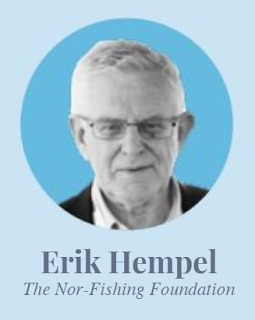By Erik Hempel
It is often easy to oversee the role that small-scale, artisanal aquaculture
plays in the world. Those of us who are involved in the high-tech end of
aquaculture tend to think that this is where the action is, and this is where
it must be. I certainly think like this most of the time.
But then I remember that we will be celebrating the year of small-scale
fisheries and aquaculture in 2022. On 5 December 2017, the UN General Assembly
declared 2022 as the International Year of Artisanal Fisheries and Aquaculture,
which will help focus attention on the small-scale fishermen and women who
comprise 90 percent of the world's fisheries work force. The General Assembly
invited FAO to serve as the lead agency.
The next question on my mind was then: is new technology relevant to the
small-scale fish farmer? Does he have any use for it? Can he afford it?
Over 20 years ago, I was working in South East Asia to promote Norwegian fish
farming technology. I discovered pretty soon that it was perhaps a bit too
advanced for most South East Asian fish farmers. Fish farming in the region was
mostly done by traditional methods and using primitive, home-made equipment
such as small bamboo cages, trash fish as feed, with untrained workers on the
farms.
I was contacted one day by a young Singaporean who had started a small fish
farm in Indonesia, near the Batam island in the Riau archipelago, very close to
Singapore. He was producing high value species like grouper, snapper, coral
trout etc., and he was now looking for ways to improve his production - and his
profitability.
I introduced him to modern Norwegian salmon technology, floating cages of the
Polar Circle type, automatic feeders from AKVA, and other equipment which was
advanced for that time.
But my young friend concluded he could not budget to accomodate this high-tech
equipment. His production was just a few tonnes per year, and the kind of money
he would have to pay for this equipment would never be recovered by his small
operation.
So, we started a discussion on what was needed for his fish farm to improve,
and I suggested he should look at operations rather than equipment and
technology. For Norwegian salmon farming was also about management and
operations and having a systematic approach to the task of fish farming.
Together, the young Singaporean and I looked at a number of tasks at his farm,
such as feeding, water quality and other parameters, and we came up with a
simple method: register everything that goes into the operations, and then take
note of the results when these inputs are manipulated.
Read more, HERE.
The Aquaculturists


No comments:
Post a Comment